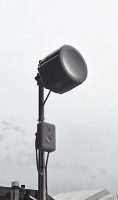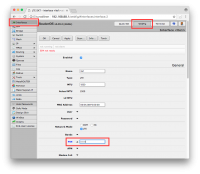The best solution for a network uplink connection is fibre, but it is not always an option. Cellular data may deliver more bandwidth than ADSL connections which utilise old phone copper wires. WiFi-router-firewall-LTE combo boxes are gaining popularity for a reason. It is a unit that looks like a WiFi access point but contains a SIM card slot for uplink connection. In Finland these are common even in fixed locations like homes, small offices and rural locations because unlimited cellular data plans have been inexpensive. Too bad that many have been disappointed by the actual data rates they are getting. Concrete or brick buildings, especially with modern thermal glasses, are very good at keeping cellular signal from getting inside the building. In rural area the distance to the cell tower is often too long for good data rates. What can you do?
The most common solution is an external antenna. The problem with that solution is attenuation in the cable. As a rule of thumb the loss is 3dB per meter and an additional 3dB per connection. For a 5 meter (17 feet) antenna cable that totals for 5*3dB+2*3dB or 21dB loss. Since the internal antennas are typically 2dBi you would need to install a 23dBi external antenna just to get equal signal level. Of course you can install a 30dBi antenna for a 7dB net gain, but such high gain antennas have very narrow beams. Narrow beam requires precise alignment. If the antenna is just slightly off or moves with the wind, you may end up with much worse signal than the internal antenna already provided.
MikroTik SXT LTE
MikroTik SXT LTE (~200€) is an outdoor antenna-LTE modem-router combo. The antenna is in the same box, so the antenna cable is just an inch long. The gain of the antenna is 9dBi (eightfold signal) but is not too difficult to align. The device is connected to the internal network by ethernet cable, that can be 100 meters long without any decrease in data rates. You could place the device on a nearby hilltop, if that’s what is obstructing your connection. The ethernet cable also supplies power, so you don’t need to worry about providing power. Just keep in mind that you need to use weatherproof ethernet cabling and protect it from surges. If the cable is longer than a stub, you need to put surge protectors at both ends.

SXT LTE can receive at 100Mbps and transmit at 50Mbps. The ethernet port is 100Mbps. There are LTE data plans with higher nominal rates, but SXT LTE cannot take advantage of them. The device comes with a 24V power supply and an ethernet adapter. For longer cable runs you should consider upgrading the voltage to 48V to minimize losses. The maximum rate is 57V.
Deployment
Under a small protective door there is an ethernet port and a place for a legacy SIM card. The door is made of hard plastic, but seems to be fairly weatherproof when closed properly. There is no seal, so putting some sealing tape over the door seams and the ethernet opening should be considered. SXT LTE comes with hardware for mast attachment, but no surge protectors.
MikroTik routers use IP address 192.168.88.1 by default. You can connect to it using a browser or MikroTik’s WinBox application. The default username is admin and password is empty. The only required setting is the PIN code for the SIM card, if it has one. The default is empty. In the browser user interface the path is: top right WebFig > top left Interfaces > select lte1 > enter PIN.

The outdoor device doesn’t contain an ethernet switch or a WiFi access point, so you need to provide those in the internal network. Usually they also provide a DHCP server that you need to switch off. A DHCP server provides IP addresses for clients, usually from subnets 192.168.0.0/24 or 192.168.1.1/24. If the clients get one of those addresses, they won’t be able to connect to the SXT LTE, because it is in a different subnet. The SXT LTE also runs a DHCP server by default providing addresses from subnet 192.168.88.0/24, but it has a two second delay. If there is some other DHCP server in the network, it will serve the clients first. That’s why you need to turn off all other DHCP servers. Typically this is the only configuration change required for the internal network.
Downsides
LXT LTE only supports LTE bands 3 ja 7 (1800MHz and 2600MHz), there is no support for GPRS or EDGE. The fourth generation LTE network is not ubiquitous, so outside of it you need to find another solution.
The cell operators don’t volunteer their tower locations or info on the frequencies in use. This makes them free to change them without notice, since the customers aren’t promised anything. Unfortunately without tower location antenna alignment becomes a manual process. SXT LTE has five LEDs to show the signal strength, so you can align it at least approximately. Fortunately the 9dBi antenni is not too directional.
Different cell operators may have very different signal strength in any given location. You should have a handful of SIM cards to try when installing. The best signal for another operator may come from a different direction, so you should re-align the antenna for each SIM card.

